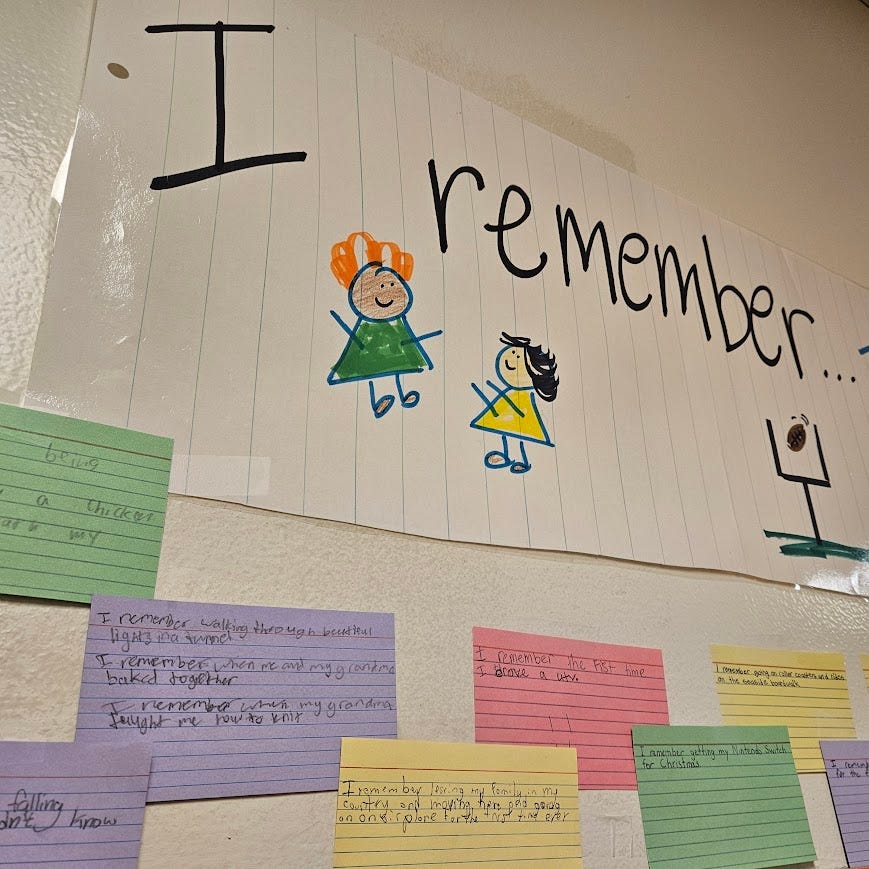Previously, I’ve shared some of my favorite generative exercises, such as “Listing,” “I Remember,” and “I Don’t Want to Remember,” to brainstorm possible story ideas for your college essay. So, how do you determine what story to pursue?
In the photo above, one student shared three “I Remember” statements:
I remember walking through beautiful lights in a tunnel
I remember when me and my grandma baked together
I remember when my grandma taught me how to knit
These are very high-level ideas that make me curious about the specifics, and that’s perfectly normal when you brainstorm ideas quickly.
How do you dig into the memory to develop the story and decide what story you want to tell? The “beautiful lights in a tunnel” is an intriguing image I’m curious to hear more about. However, is the story behind that image simply an observation, or is there something more there that will allow admissions officers to envision that student in their academic community?
Likewise, are the memories of baking and knitting with their grandmother a way for the student to give admissions officers insight into their values, identity, and culture?
The only way to know is to develop and test the story ideas. Instead of jumping right into a first draft, try this freewriting exercise to mine the memory in as much detail as possible.
Set a timer for 30 minutes and work through the list of questions below to create a “word portrait” that captures not only the memory itself but what led up to it and maybe what happened afterward.
Ask yourself:
a. What do I remember seeing, hearing, smelling, tasting, touching? Describe the sensory details.
b. What else was happening? Is that a part of the story or a distraction?
c. What character traits does this memory/event reveal about me?
d. What do I like or not like about these traits?
e. Pick the most prominent trait. How does this particular trait explain who I am better than my appearance, success at school, sports, art, etc.?
f. Why can’t I avoid thinking about this aspect of myself? (Do I avoid thinking about it?)
g. What does it say about me as a person that I remember the details I am providing?
h. Why can’t I forget this memory?
Note: Exercises such as this one are for brainstorming and exploration. What you write in the next 30 minutes may not make it into your first draft, but it will help flesh out a memory you might want to use now or in a future essay.
If, after mining the memory, you decide not to move forward with that story for your main personal statement, don’t discard your work! You never know what might come in handy when working on your supplemental essays.
Feel free to contact me with questions, share story ideas, or inquire about setting up private coaching sessions.
Above all, I encourage you to relax and enjoy writing. Brainstorming, crafting, and revising compelling college application essays will also help you become adept at thinking and writing about your life stories.





